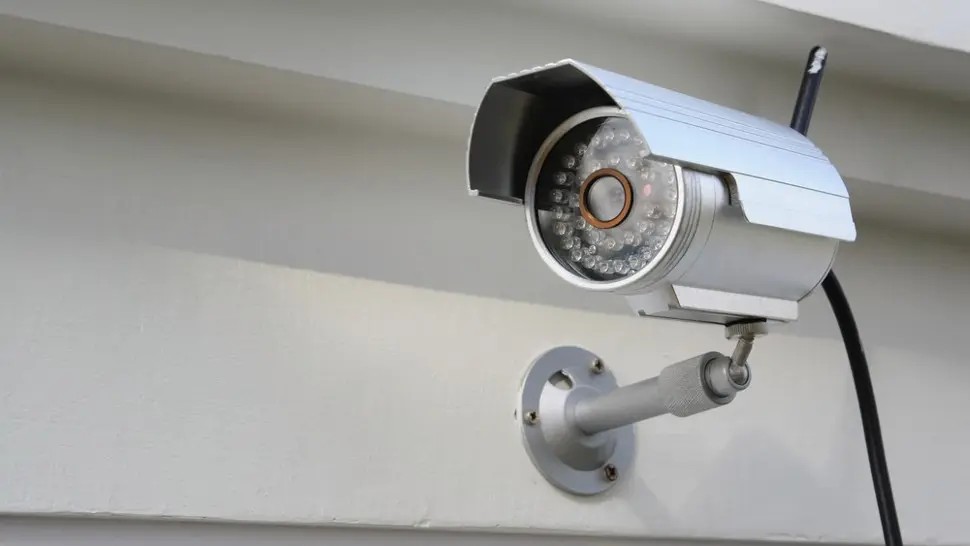Security cameras play a vital role in deterring criminal activities and promoting public safety. By monitoring and recording events, they provide valuable evidence for investigations and enhance the overall security of both residential and commercial spaces. However, with the increasing prevalence of fake security cameras in the market, it’s essential to be aware of the potential risks associated with relying on counterfeit devices.
By familiarizing yourself with signs, you can effectively identify fake security cameras and make informed decisions when selecting and installing surveillance systems.
1. Physical Appearance
Poor Quality Materials and Construction
One of the key indicators of a fake security camera is its inferior build quality. These counterfeit cameras are often made from cheap materials and exhibit signs of poor construction. They may feel lightweight or flimsy compared to genuine security cameras, which are typically sturdier and made with higher-quality materials.
Absence of Brand Logos or Markings
Legitimate security camera manufacturers usually place their brand logos or markings on their products as a way to establish authenticity and brand recognition. In contrast, fake security cameras often lack these identifiable logos or markings. Be wary of any camera that doesn’t display a reputable brand name, as it could be an indication of its counterfeit nature.
Inconsistent or Mismatched Design Elements
Another red flag to watch out for is inconsistency or mismatched design elements. Genuine security cameras usually exhibit a consistent design throughout their product line, whereas fake cameras may have noticeable variations or inconsistencies in their appearance. Pay attention to details such as color, shape, and overall design to identify any discrepancies that could suggest a fake security camera.
2. Lack of Functionality
Non-Functional or Non-Operational Features
One clear sign of a fake security camera is the lack of functionality. Fake cameras often have non-working or non-operational features, such as motion detection, infrared capabilities, or pan/tilt functionality. These features are essential for genuine surveillance cameras to effectively monitor and capture footage.
Inability to Adjust Camera Angles or Settings
Another telltale sign is the inability to adjust the camera angles or settings. Legitimate security cameras allow for flexible positioning and angle adjustments to cover specific areas of interest. Fake cameras are typically fixed in position or have limited range of movement, indicating their inauthenticity.
Absence of Visible Cables or Power Source
Genuine security cameras require power to operate and transmit video signals. If a camera appears to be wireless but lacks any visible power source or cables, it is likely a fake. Authentic cameras usually have visible cables for power and data transmission, while wireless cameras still require a power source for operation.
3. Inadequate Installation
Improper or Haphazard Mounting Techniques
When it comes to fake security cameras, one of the key indicators is the quality of installation. Look for signs of sloppy or careless mounting, such as cameras that are tilted, crooked, or loosely attached. Authentic security cameras are typically installed securely and professionally.
Inconsistent Placement in Relation to Surveillance Needs
Another telltale sign of a fake security camera is its placement. Legitimate cameras are strategically positioned to cover important areas and maximize surveillance effectiveness. Fake cameras may be randomly placed without much thought to surveillance requirements or security vulnerabilities.
Lack of Accompanying Warning Signs or Indicators
Authentic security cameras are often accompanied by warning signs or indicators to deter potential intruders. These signs serve as a clear message that the area is under surveillance. Fake security cameras, on the other hand, may lack these warning signs or have generic signs that do not specifically mention video surveillance.
4. Absence of Supporting Infrastructure
Missing or Improperly Installed Equipment
One of the clear indicators of a fake security camera is the absence or improper installation of supporting equipment. Fake cameras may lack the necessary wiring or have poorly installed recording devices, making them non-functional and ineffective in capturing and storing video footage. Without the proper infrastructure in place, these cameras serve as mere decoys rather than reliable security devices.
Lack of Connection to Monitoring System or Network
Another sign of a fake security camera is the lack of connection to a monitoring system or network. Genuine security cameras are typically linked to a monitoring station or network, allowing for real-time monitoring and remote access to the camera feed. Fake cameras, on the other hand, lack this connection, rendering them incapable of transmitting video footage to a central monitoring location.
Inability to Access or Retrieve Recorded Footage
Fake security cameras often lack the ability to store or retrieve recorded footage. Authentic security cameras usually have a recording device or a storage system, such as a DVR (Digital Video Recorder) or NVR (Network Video Recorder), enabling the review of past events. In contrast, fake cameras are typically void of this functionality, making it impossible to access or retrieve any recorded video evidence.
5. Behavioral Indicators
No Tracking or Following of Movement
A key sign to identify a fake security camera is its inability to track or follow movement accurately. Authentic security cameras are designed to detect motion and respond accordingly by tracking and following the subject. Fake cameras lack this feature, remaining stationary and failing to actively monitor or capture moving objects within their field of view.
Inactive Response to Motion or Stimuli
Fake security cameras often exhibit an inactive response to motion or stimuli. Legitimate security cameras are equipped with sensors that trigger recording or alert systems when motion is detected. In contrast, fake cameras do not possess such functionality and, therefore, do not respond to any activity or stimuli in their vicinity.
Lack of Visual Indicators
Another telltale sign of a fake security camera is the absence of visual indicators, such as LED lights or pan-tilt-zoom functionality. Genuine security cameras often have LED lights that indicate their operational status, acting as a visual deterrent to potential intruders. Additionally, authentic cameras may feature pan-tilt-zoom capabilities, allowing for a wider range of surveillance. Fake cameras lack these visual indicators and advanced functionalities.
In the era of increasing security concerns, identifying fake security cameras is crucial for ensuring reliable surveillance. By being mindful of physical appearance, functionality, installation quality, supporting infrastructure, and behavioral indicators, one can effectively spot counterfeit devices. Fake cameras often lack brand markings, exhibit poor construction, lack functionality, and fail to connect to monitoring systems. Additionally, they may lack visible cables or power sources, have improper installation, and show inactive responses to motion. Being vigilant and knowledgeable about these signs empowers individuals to make informed decisions and maintain a robust security environment.
Publisher’s Details:
Vertex Security Systems
400 2nd Ave, New York, NY 10010
(212) 586-3633
vertexsecurity.com
info@vertexsecurity.com
When it comes to identifying fake security cameras, one important aspect to consider is investing in the right alarm system. In our blog post titled “Stop Break-ins Before They Happen with the Right Alarm System,” which provides valuable insights into choosing the ideal security solution. If you’re in need of expert commercial security solutions in Brooklyn, NY, check out Vertex Security, We offer customized options tailored to your specific requirements.





